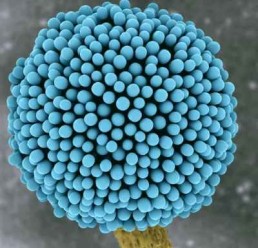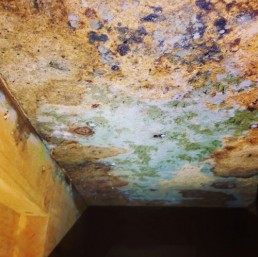Mould is as old as the earth itself.
Anywhere that there is moisture is a potential growth area.
It can be in the air and it can grow on a number of surfaces and is not always bad. It can be part of cheese, part of wine and part of many medications. But can have negative consequences.
For most people there are two areas where they should care about mould.
-
YOUR HEALTH
- Mould can affect the health of many people but it’s infants, pregnant ladies and the elderly that are likely to be most affected.
- Health implications can range from serious illness and chronic lung conditions to slight sensitivities (anything from throat or nose irritation through to coughing and wheezing.)
- Mould can also cause shortness of breath and asthma.
-
YOUR HOME
- There are a number of ways that it can infest your home. It can get in through doorways, vents and air conditioning systems. It’s generally found in areas with a lot of moisture such as roofs, windows and pipes. Flood damage can also cause mould growth. It can damage your files (paper and cardboard) and wood products. It’s also known to damage plaster walls, wallpaper, carpet, fabric and upholstery.
- Mould is naturally occurring and anywhere that moisture grows is an area ripe for mould infestation. It’s not always bad but it can have negative health consequences.
- If you have a mould infestation inside your house it’s important that you get it treated properly and ensure that areas are treated to ensure that fungal growth doesn’t return.
Why Do Cleaning Products Kill 99.9% Of Bacteria?
Nearly every time you look at a TV commercial for a cleaning product, it will claim to remove 99.9% of all bacteria or germs.
Why can’t cleaning products kill all bacteria?
And the answer is – the maths (or math, if you live in North America) and for once, the advertising is reasonably accurate.
Most people think that killing bacteria is an all-or-nothing scenario. If you apply a sanitiser, it will kill everything it touches.
This is not exactly true. When you ‘kill’ bacteria, you are actually reducing their numbers in a logarithmic way. If you a maths geek, it’s log base 10.
What does 99.9% actually mean?
To put this in simple way, the cleaning product will kill 90% of all the bacteria present.
It will then kill 90% of the remaining bacteria and then another 90% of the new level and so on and so on………
So, if the cleaning product keeps reducing the bacterial level by 90%, it is always leaving behind 10%.
So if you keep following this theory, then you can never kill all of the bacteria as there is always some that survive each level of reduction.
How often the cleaning product cycles though this 90% reduction depends on a range of things.
But at the end of it, according to the maths, you will never have 100% of the bacteria killed.
So the advertisers claim that “99.9% of all bacteria is removed”, it simply means that it has enough strength or activity to go through three cycles – first gets the 90%, the next gets the 9% and the last gets the 0.9% giving a total of 99.9%
So, where’s the catch?
The real question you should ask is not how many bugs are killed, but which bugs are killed.
You see, in a laboratory, any sort of bacteria can be grown.
So, lets say a manufacturer of a new cleaning product wants their whizz bang spray to get it’s 99.9% number.
What is stopping them from testing it against some bacteria that don’t cause any problems or some ‘weak’ bacteria?
The answer is……….nothing really. All the adverts I’ve seen just yell about 99.9%.
They don’t normally say 99.9% of pathogenic bacteria (pathogenic – disease causing) or 99.9% of Salmonella.
So as long as the claim on the label can be backed up by some properly conducted laboratory tests, then they are in the clear.
The end result is – you don’t really know what your kitchen spray is actually killing.
PS – for all the maths geeks out there, I know that using percentages to describe logarithmic functions is a bit wrong. This is not a maths website, it’s about cleaning.
Common Viruses in the Home
Common viruses that affect people all day, all around the world are: Rotavirus, Hepatitis and Adenovirus.
Rotavirus is the most common cause of diarrhoeal disease among infants and young children.
Hepatitis affects people in various ways and different varieties are known by multiple “names” such as Hepatitis A, B and C.
Some people infected with hepatitis have no symptoms, others can see symptoms including fever, nausea, abdominal discomfort, dark urine, lethargy (tiredness), painful joints, oedema (swelling), easy bruising, jaundice (yellow skin and eyes).
Adenovirus symptoms include Cold, Pharyngitis (Sore Throat), Bronchitis, Diarrhea, Pneumonia, Conjunctivitis (Eye infection), Fever, Cystitis (bladder inflammation or infection) and Rash.
Viruses can’t be treated with normal antibiotics as they behave completely differently to bacteria.
Mould and Mycotoxins
There are multitudes of pages written about mycotoxins and the effects they have on humans and animals.
The main reason I am writing about them on a cleaning and restoration website is to hep you understand the health implications of mould.
Mycotoxins are by-products of mould metabolism and can cause harm without the mould being present. While this is can be a significant issue in environmental mould (such as what you find in houses), mycotoxins in food are a major issue, even causing death.
One mould that produces mycotoxins is the Aspergillus species, including Aspergillus parasiticus, Aspergillus flavus, Aspergillus alutaceus, Aspergillus carbonarius and Aspergillus niger (the photo on this page of the ‘blue flower’ is Aspergillus niger under an electron microscope).
Aspergillus is commonly found in water damaged homes, which means it can produce mycotoxins in a home environment.
Aflatoxins
These Aspergillus fungi (mould) produce Aflatoxins, Ochratoxin and Fumonisins.
Aflatoxins are a recent discovery, having been identified in Britain during the 1960’s and has since been linked to several medical issues.
Aflatoxins can grow to significant levels in the right conditions, but can also be easily inhibited. So in an uncontrolled environment (such as a water damaged house), there is no easy way to determine if they are present or not, and in what concentrations.
Factors Affecting Fungal (Mould) Growth
There are a number of articles on this website about fungi and how it can have a negative impact on people’s health and welfare. Some people are more likely to experience a negative impact than others – for example children, pregnant women and the elderly.
Whilst many of our articles have focussed on getting a mould infestation cleaned, this article focuses on how mould grows so you can identify areas around your house that may be at risk.
The the main factors affecting fungal growth.
- pH
- Moulds differ in their pH requirements but the most common pH range is 3-7. That is, most mould requires slightly acidic conditions to flourish.
- Moisture
- Mould requires moisture to flourish.
- You need to try and avoid damp areas around your house.
- Air
- Airflow is an important factor in encouraging mould growth.
- It’s common to find mouldy areas around heaters and airconditioners.
- Nutrients –
- Mould needs to be fed. It needs nutrients to grow.
- Moulds can require high sugar or high salt.
- Nutrient requirements are different depending on the mould you are talking about.
- Temperature
- The most common temperatures where mould will grow is between 15 and 30 degrees Celsius.
- Having said that, there are some moulds that thrive above 45 degrees Celsius
- Light
- Many moulds flourish in dark spaces but some prefer an alternate light pattern – some light, and some dark.





